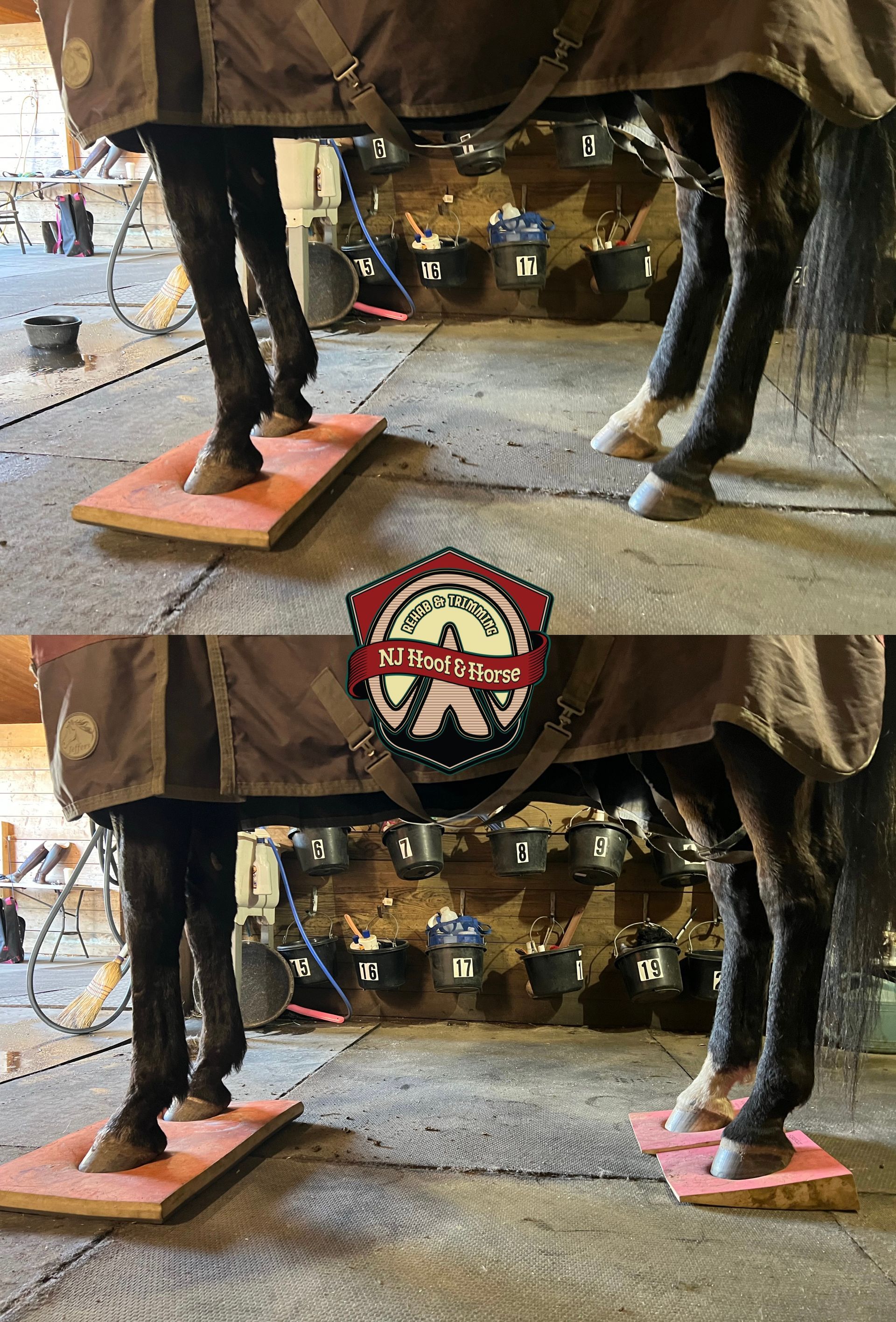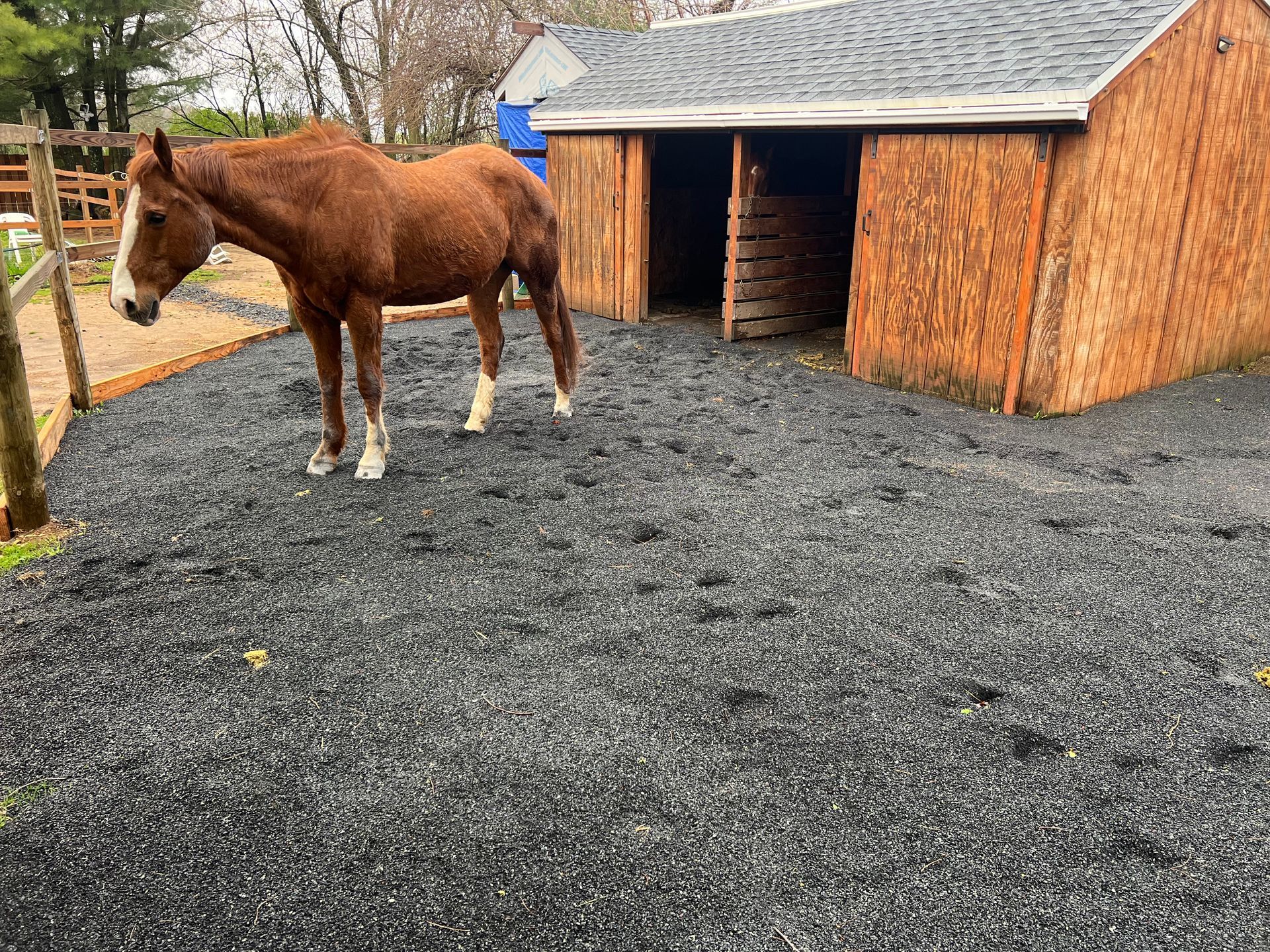Wow, that's a shiny hoof!
Write below if you use hoof dressing!
Are you a fan of hoof dressing? Do you have a can in your barn? What purpose does hoof dressing serve anyway?
I get a lot of questions about hoof oils and if I use or recommend them. Honestly, I don’t see the need to use them. 🤷🏻♂️We have to find out their purpose and the effect they have on the hoof in order to come to any conclusion.
People strive to “moisten” the hoof because to them it seems “too dry”. The hoof is a very complicated structure and believe it or not it balances its own moisture from the inside out whether the environment is wet or dry☀️🌧. When we apply topical oils, hoof dressings, we’re trapping the fungi and bacteria between the later of the oil and the microscopic cracks on the surface of the hoof. Don’t forget, if the horse is standing in poop💩 and urine then its twice as dangerous for the hoof to have bacteria literally trapped on the hoof wall😕. Theres a high chance that this can progress into something more dangerous, like white line disease!
I also want to mention, there were studies that found that “Formalin”, a common ingredient in hoof oils, acts destructively to the hoof. ❗️It causes the hoof wall to become brittle and have micro cracks that trap bacteria inside. ❗️Serious stuff! Research Formalin and what it does to the keratin material of the hoof.
If you are worried that your horse has “dry feet” or tiny cracks its worth looking into the diet first. I’ve seen so many instances when the quality of the hoof wall improved just by limiting sugars and starches and getting the horse on a balanced mineral supplement. In instances of poor nutrition, applying hoof dressing on these types of hooves is the same as painting over a dent on a car🚗. The dent is still there, you’re just covering it with a “pretty mask”😆. In order to get rid of the dent a mechanic has to correct it from the inside or replace the damaged part of the car. Same thing in hoof care. When the hoof wall is poor quality, masking everything with hoof dressing is worthless. It’s much more efficient correcting the problems from the inside out, rather than masking them from the outside.
If you live in the desert☀️🌵 and the hooves are actually dry, use water💧. Believe me it helps. Hose the hooves down with water for a couple of minutes and you’ll see the difference. If you live in the wet
environment of the East coast as I do (New Jersey, USA) then there’s no point of dressing the hoof with oils. We live in a wet climate🌧🌧! The hooves sustain themselves!
Sure, the hoof looks ✨shiny ✨, pretty, not arguing! But I’ve seen cases when owners put the dressing on a messed up hoof and say “it helps”. I’ll tell you a secret, it doesn’t😂! If the hoof is trimmed improperly, if the horse is landing incorrectly and as was mentioned, if the diet is bad, you’ll end up with a shiny, distorted hoof😐.
Traditions play a big role in horse & hoof care. There’s a lot of myths out there about hoof care that are passed on by generations of owners. Just because somebody told you “its healthy” doesn’t mean it’s true. You’ll be surprised how many things can be improved in the life of your horse when you do your research🔍!
If you made it to the end thanks for reading! You’re the best!
Feel free to share this post, maybe it’ll be useful to somebody 😁
Denys A.
856-238-3533
https://thehorse.com/130678/hoof-dressings-what-studies-show/

